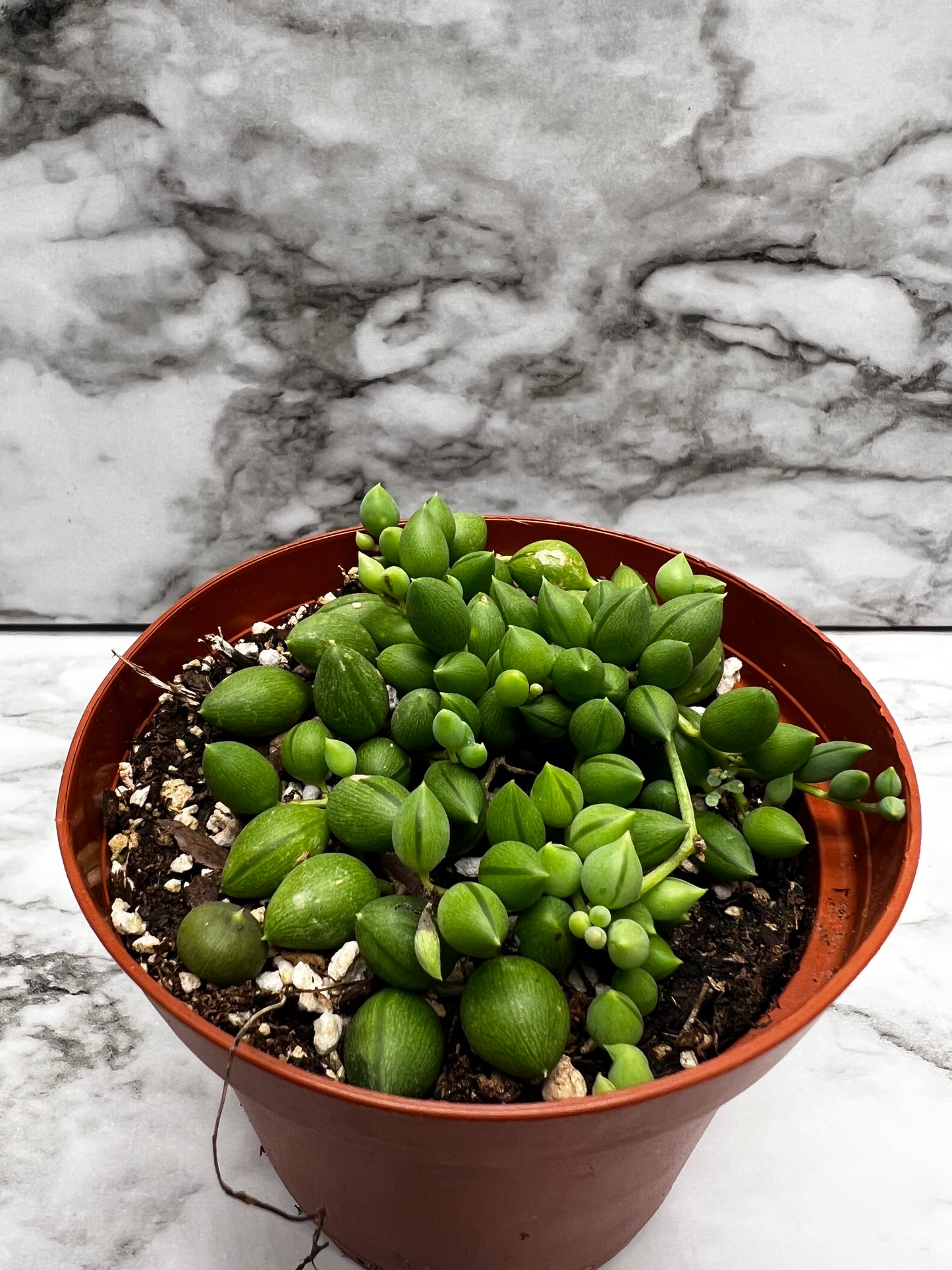Senecio/Curio citriformis - String of Tears
Senecio/Curio citriformis - String of Tears
Couldn't load pickup availability
Due to the high stock levels of this plant, you most likely will not receive the plant pictured. We do promise to hand-select plants of equal or better quality for your order.
Scientific Name
Curio citriformis (G.D.Rowley) P.V.Heath
Common Name(s)
String of Tears, String of Lemons
Synonym(s)
Senecio citriformis
Scientific Classification
Family: Asteraceae
Subfamily: Asteroideae
Tribe: Senecioneae
Subtribe: Senecioninae
Genus: Curio
Origin
This species is native to South Africa, Lesotho, and Swaziland.
Description
Curio citriformis, formerly known as Senecio citriformis, is a beautiful succulent with unique teardrop-shaped leaves on erect or procumbent, up to 4 inches (10 cm) long stems. Leaves are soft green to deep green with translucent longitudinal stripes and a waxy coating. They are up to 1 inch (2.5 cm) long and up to 0.3 inches (0.8 cm) in diameter. Small heads of creamy-yellow flowers appear on thin, up to 6 inches (15 cm) tall, wiry stalks from late summer to winter.
How to Grow and Care for Curio citriformis
Light: Keep Curio plants in partial shade if outdoors, which is their preference in summer, and bright sunlight if indoors. They will grow in full shade but will become lank and leggy.
Soil: These plants prefer well-draining soil. For growing Curio indoors, it is essential to use a container with at least one drainage hole at the bottom.
Hardiness: Curio citriformis can withstand temperatures as low as 30 to 50 °F (-1.1 to 10 °C), USDA hardiness zones 10a to 11b.
Watering: Curio plants are drought tolerant, but the soil should never be left dry for too long. They need some water during the growing season but be careful not to leave the soil wet for prolonged periods.
Fertilizing: The members of this genus can take a bit more fertilizer than other succulents if you want them to grow fast.
Repotting: You do not need to repot Curio plants often. You can do it when you see that the container becomes too small or shallow.
Propagation: These plants can be grown from seeds or cuttings.
Toxicity of Curio citriformis
Curio plants are toxic. Grow them with great care if you have children, pets, or livestock.
Information gathered from: https://worldofsucculents.com
Share


